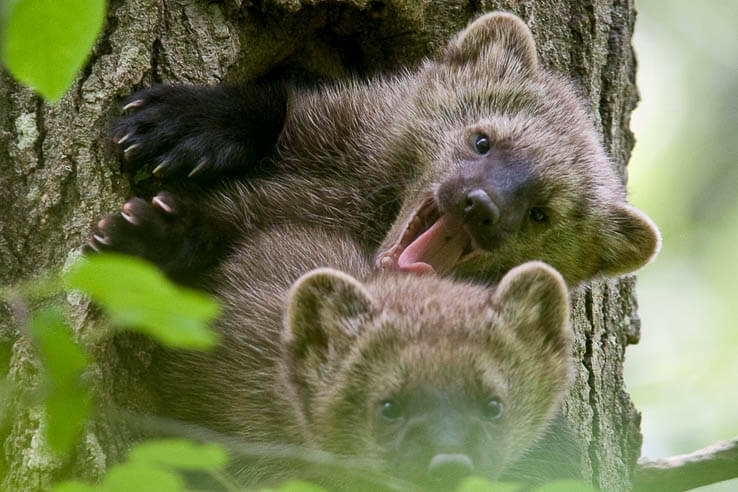A ferocious predator in a small package

These adorably furry predators may be born blind and take around 50 days to open their eyes, but fishers (Pekania pennanti) grow into quite the hunters. In the Chesapeake Bay watershed, you're most likely to find fishers in expansive forests of West Virginia, though some may wander into Virginia.
Though it is often referred to as the “fisher cat,” the fisher is not a feline—it’s part of the weasel family. Fisher is a misnomer for another reason as well: the fisher isn’t known to eat fish. Instead, it feeds on birds, frogs, dead animals (carrion) and small mammals including squirrels, mice and shrews. The name actually comes from “fitch,” which refers to a polecat—a similar-looking mammal native to parts of Europe and Asia.

When searching for a meal, these little hunters are clever enough to find their way around some formidable spikes. Fishers are one of the few predators of porcupines. An adult North American porcupine has more than 30,000 quills: sharp, stiff hairs with hundreds of tiny barbs located at the tip. While porcupines cannot throw their quills, they detach easily and can lodge themselves into the skin of predators, where the barbs make them difficult to remove. To avoid being pricked, fishers flip the porcupines over to eat them.
Fisher populations were once seriously threatened due to habitat loss, as the large stretches of coniferous forests they prefer became developed or fragmented. Much of the land in this area has been developed as the population of the region increases. Fortunately, reforestation efforts have allowed them to rebound in much of their eastern range, which runs from Canada down to West Virginia. Out west, fishers are in more trouble—the Sierra Nevada population is still so low, it has been proposed for listing as an endangered species.
Learn more about the fisher and other fascinating creatures of the Chesapeake in our Field Guide.

Comments
While deer hunting, I watched a large fisher hunting along an embankment, checking out a number of holes for prey. Suddenly, he got my scent, let out a loud hissing snarl and came at me at a dead run. My only option was to protect myself, as he meant business. After I put him down. I noticed his fur was moving and upon closer inspection saw that he was literally alive with red lice. I reported this to the DEC and they concluded the fisher was driven to near madness by the lice and that provoked the attack.
I've watched a pair of these critters playing in our mostly hardwood forest, just across the South Branch, in West Virginia. Delightful to see. So far, they've left our chickens alone...
Really love these posts. We repost them every Monday for our marine-fact Monday posts on Instagram and Facebook. Had no idea the Fishers were in the Chesapeake region!
Thank you!
Your comment has been received. Before it can be published, the comment will be reviewed by our team to ensure it adheres with our rules of engagement.
Back to recent stories